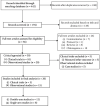The Outcome of Hydroxychloroquine in Patients Treated for COVID-19: Systematic Review and Meta-Analysis
- PMID: 33082891
- PMCID: PMC7556078
- DOI: 10.1155/2020/4312519
The Outcome of Hydroxychloroquine in Patients Treated for COVID-19: Systematic Review and Meta-Analysis
Abstract
Background: The pandemic of coronavirus disease 2019 (COVID-19) caused by severe acute respiratory syndrome coronavirus 2 (SARS-CoV-2) resulted in an unprecedented public health challenge worldwide. Despite urgent and extensive global efforts, the existing evidence is inconclusive regarding the medications used for the treatment of COVID-19.
Purpose: To generate an up-to-date evidence for the clinical safety and efficacy of hydroxychloroquine (HCQ) with or without azithromycin (AZ) among patients treated for COVID-19. Data Source. PubMed, Cochrane CENTRAL, LITCOVID, Web of Science, SCOPUS, BioRxiv, Embase, MedRxiv, and Wiley online library were searched from 2019/12/30 to 2020/05/23. Study Selection. Three investigators assessed the quality of the studies. Data Extraction. Data about study characteristics, effect estimates, and the quality of the studies were extracted by two independent reviewers and cross-checked by the third reviewer. Data Synthesis. The data of 6,782 (HCQ group, 3623; HCQ + AZ group, 1,020; control group, 2139) participants were included. HCQ was compared with standard care for virologic efficacy, disease progression, mortality, and adverse effects. HCQ was also compared with HCQ + AZ for QTc prolongation, admission to the intensive care unit, and mortality. The study found HCQ did not alter the rate of virologic cure (OR = 0.78; 95% CI: 0.39-1.56) and the risk of mortality (OR = 1.26; 95% CI: 0.66-2.39). The pooled prevalence for mortality was 5.8% (95% CI: 0.9%-10.8%). Moreover, HCQ did not impact disease progression (OR = 0.9; 95% CI: 0.36-2.29) but resulted in a higher risk of adverse effects (OR = 2.35; 95% CI: 1.15-4.8). HCQ was also compared against HCQ + AZ, and no difference was observed in QTc prolongation above 500 ms (OR = 1.11; 95% CI: 0.54-2.28), admission to the intensive care unit (OR = 0.92; 95% CI: 0.52-1.63), and mortality (OR = 0.88; 95% CI: 0.55-1.43). However, in the analysis of single-arm studies, about 11.2% (95% CI: 7.0%-15.5%) of patients have developed an absolute increase of QTc greater than 500 ms, and 4.1% (95% CI: 1.1%-7.1%) of patients discontinued their medication.
Conclusion: This meta-analysis and systematic review, which included a limited number of poorly designed studies of patients with COVID-19, revealed HCQ is intolerable, unsafe, and not efficacious. Similarly, HCQ + AZ combination was not different from HCQ alone in curbing mortality and ICU admission.
Copyright © 2020 Teshale Ayele Mega et al.
Conflict of interest statement
The authors declare that they have no conflicts of interest.
Figures













Similar articles
-
Outcomes of 3,737 COVID-19 patients treated with hydroxychloroquine/azithromycin and other regimens in Marseille, France: A retrospective analysis.Travel Med Infect Dis. 2020 Jul-Aug;36:101791. doi: 10.1016/j.tmaid.2020.101791. Epub 2020 Jun 25. Travel Med Infect Dis. 2020. PMID: 32593867 Free PMC article.
-
Virological and clinical cure in COVID-19 patients treated with hydroxychloroquine: A systematic review and meta-analysis.J Med Virol. 2020 Jul;92(7):776-785. doi: 10.1002/jmv.25898. Epub 2020 May 3. J Med Virol. 2020. PMID: 32297988 Free PMC article.
-
Early Outpatient Treatment of Symptomatic, High-Risk COVID-19 Patients That Should Be Ramped Up Immediately as Key to the Pandemic Crisis.Am J Epidemiol. 2020 Nov 2;189(11):1218-1226. doi: 10.1093/aje/kwaa093. Am J Epidemiol. 2020. PMID: 32458969 Free PMC article.
-
Acute QT Interval Modifications During Hydroxychloroquine-Azithromycin Treatment in the Context of COVID-19 Infection.Mayo Clin Proc. 2020 Aug;95(8):1696-1700. doi: 10.1016/j.mayocp.2020.05.005. Epub 2020 May 20. Mayo Clin Proc. 2020. PMID: 32753141 Free PMC article.
-
COVID-19 Pandemic - A Narrative Review of the Potential Roles of Chloroquine and Hydroxychloroquine.Pain Physician. 2020 Aug;23(4S):S351-S366. Pain Physician. 2020. PMID: 32942793 Review.
Cited by
-
Effect of azithromycin and hydroxychloroquine in patients hospitalized with COVID-19: Network meta-analysis of randomized controlled trials.J Med Virol. 2021 Dec;93(12):6737-6749. doi: 10.1002/jmv.27259. Epub 2021 Aug 17. J Med Virol. 2021. PMID: 34370328 Free PMC article.
-
More skilled clinical management of COVID-19 patients modified mortality in an intermediate respiratory intensive care unit in Italy.Respir Res. 2021 Jan 15;22(1):16. doi: 10.1186/s12931-021-01613-2. Respir Res. 2021. PMID: 33451327 Free PMC article.
-
The polymorphism L412F in TLR3 inhibits autophagy and is a marker of severe COVID-19 in males.Autophagy. 2022 Jul;18(7):1662-1672. doi: 10.1080/15548627.2021.1995152. Epub 2021 Dec 29. Autophagy. 2022. PMID: 34964709 Free PMC article.
-
Efficacy and safety of azithromycin in Covid-19 patients: A systematic review and meta-analysis of randomized clinical trials.Rev Med Virol. 2022 Jan;32(1):e2258. doi: 10.1002/rmv.2258. Epub 2021 Jun 2. Rev Med Virol. 2022. PMID: 34077600 Free PMC article.
-
Comparative effectiveness of pharmacological interventions on mortality and the average length of hospital stay of patients with COVID-19: a systematic review and meta-analysis of randomized controlled trials.Expert Rev Anti Infect Ther. 2022 Apr;20(4):585-609. doi: 10.1080/14787210.2022.1997587. Epub 2021 Dec 29. Expert Rev Anti Infect Ther. 2022. PMID: 34694949 Free PMC article.
References
-
- WHO Health Emergency Coronavirus 19 Dashboard, 2020.
Publication types
MeSH terms
Substances
LinkOut - more resources
Full Text Sources
Miscellaneous

